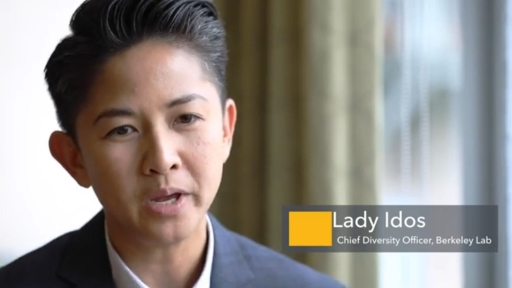4.1 Maintaining the dialogue
Another important element of staying up to date is maintaining the dialogue and momentum within your organisation, and encouraging your staff to continue to share their experiences with you. ‘Diversity and inclusion’ is not something that you can ‘do’ and tick off – it is an ongoing commitment, and continuing discussions and conversations play an important part in that.
In Week 4, you considered the fear of saying something wrong and the fear of conflict or difference. Inevitably, the dialogue will sometimes be uncomfortable, so Coach Diversity Institute (no date) suggests ten strategies for holding difficult conversations about diversity:
- Set the stage – let people know about the discussion ahead of time and be clear about its purpose and what you hope to achieve.
- Establish discussion guidelines – e.g. listen without interrupting, give everyone an opportunity to speak, don’t criticise one another but challenge harmful ideas, allow questions without judgement.
- Make the conversation a brainstorming session – prepare questions to get the conversation started in a warm and welcoming way so participants feel safe to discuss and share.
- Expect different viewpoints and encourage humility – there’s a high probability that at least one person will react defensively. Open the conversation up by reassuring employees this is a safe space to express vulnerability and curiosity.
- Listen more than you speak – encourage participants to pause before responding and really consider if they understand someone’s meaning or feelings before making assumptions or reacting defensively.
- Encourage a lot of questions – questions are a critical part of the process, ask them on behalf of the group but encourage participants to ask questions as well.
- Check your privilege – ask participants to consider how the advantages they’ve had in life might contribute to their opinions and actions, or how it has kept them from understanding or experiencing the struggles of others.
- Don’t shame or humiliate – be prepared to shut down shame and humiliation. These conversations may get heated, but the anger or upset is likely directed at injustices in the world in general, rather than someone in particular.
- Address hesitancy in the conversation – try to discover why it’s difficult to discuss. The odds are good that someone else feels the same way and is too afraid to speak up. These open interactions help people see their similarities with one another.
- Remind everyone of the common goal – everyone is working toward equality, understanding, empathy, and to end discrimination, so focus your attention on the mutual gain.
Another way to maintain the diversity and inclusion dialogue is to ensure that your diverse new hires don’t descend into groupthink once they are embedded within your organisation.
Groupthink
If your organisation expects or encourages employees to conform to a certain set of values and beliefs, diverse voices will get lost amongst the more prevalent ones and even though they don’t think the same, they won’t feel empowered to say anything different.
Janis (1971) uses the term groupthink to refer to ‘the mode of thinking that persons engage with when concurrence-seeking becomes so dominant in a cohesive ingroup that it tends to override realistic appraisal of alternative courses of action.’
Lau (2022) describes four symptoms of groupthink:
- Trying to evade conflict within the group wherever possible
- Having a know-it-all attitude and a lack of critical thinking, demonstrating biases and stereotyping
- Lack of psychological safety (if you feel psychologically safe, you know you won’t be reprimanded or punished for expressing a concern or making a mistake)
- Overly rigid thinking that doesn’t take intuition into consideration.
Lean Impact (no date) suggests useful strategies to combat groupthink:
- Recruit a diverse team
- Organise your space – while collaborative spaces can be useful for team building, creating spaces where people can go to be alone communicates that your organisation also values independent thought.
- Make time for independent evaluation – not everyone enjoys brainstorming in meetings. Communicating challenges in advance, and encouraging everyone to develop an idea, will both give staff time to think about an issue, and make it clear that you value each of their ideas.
- Encourage personal and professional development to avoid groupthink – if everyone reads the same articles, attends the same conferences, and experiences the same interactions and outcomes, how will your organisation maintain diversity of thought?
- Celebrate diverse perspectives – encourage constructive debate by always asking ‘why’ when someone proposed something new. Highlight where an individual’s contribution made a difference to a strategy or piece of work.
In her article about groupthink, Lau (2022) refers to psychological safety, which involves creating an environment where individuals can be their authentic selves. While the concept often focuses on high performing teams, it can also be very relevant from the perspective of inclusivity.
Watch this short video from Berkely Lab’s Chief Diversity Officer talking about psychological safety.

Transcript: Video 6: Berkeley Lab’s Chief Diversity Officer Talks About Psychological Safety
In the final section this week, you’ll look to the future and explore some of the diversity and inclusion themes that experts think are likely to grow in profile and importance.

